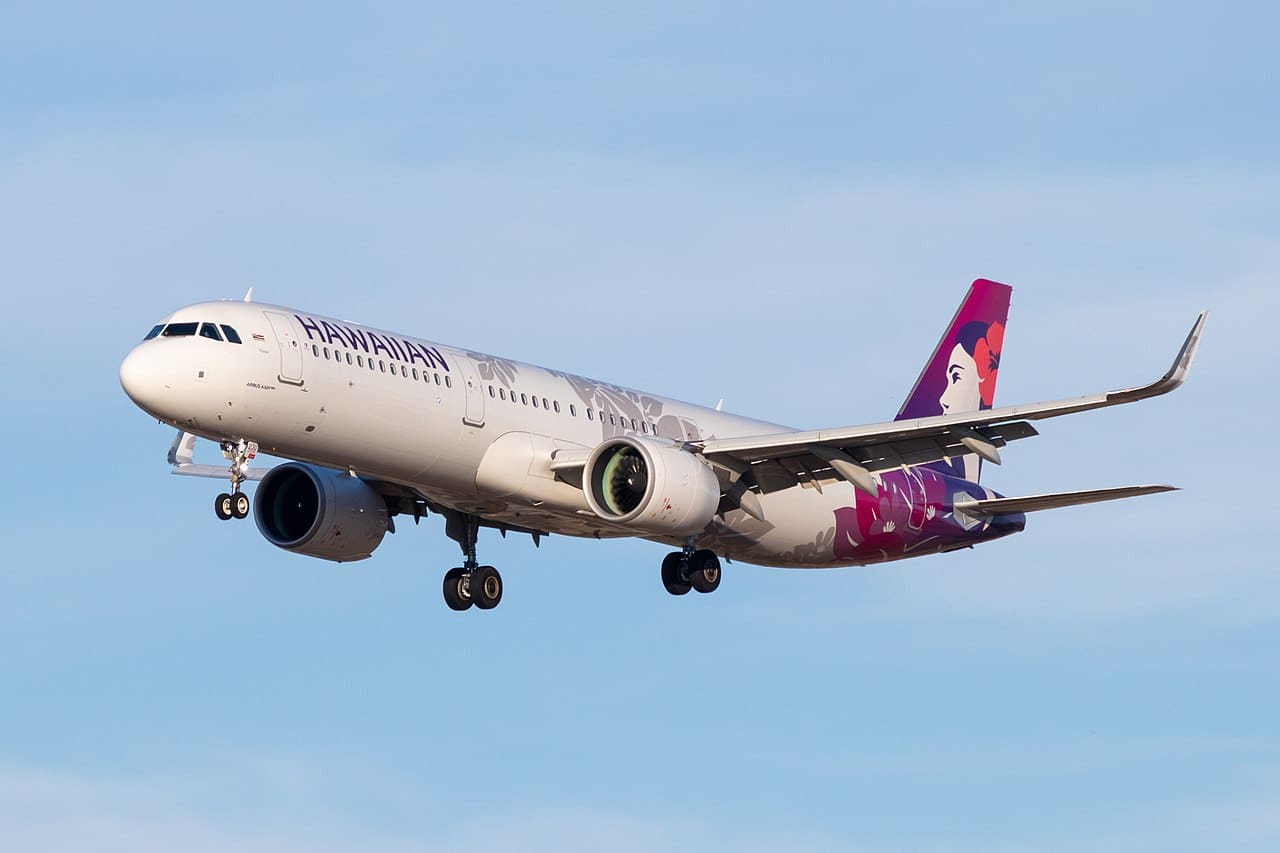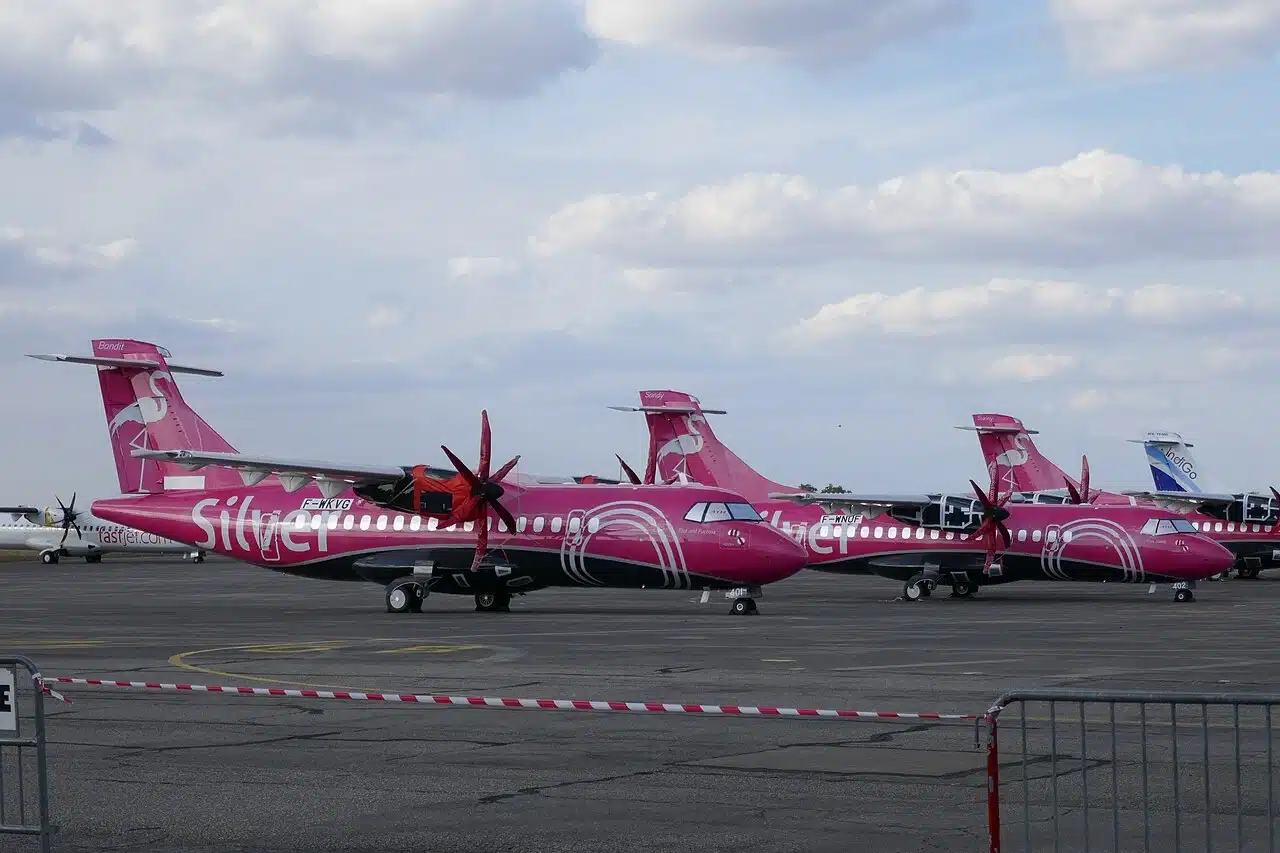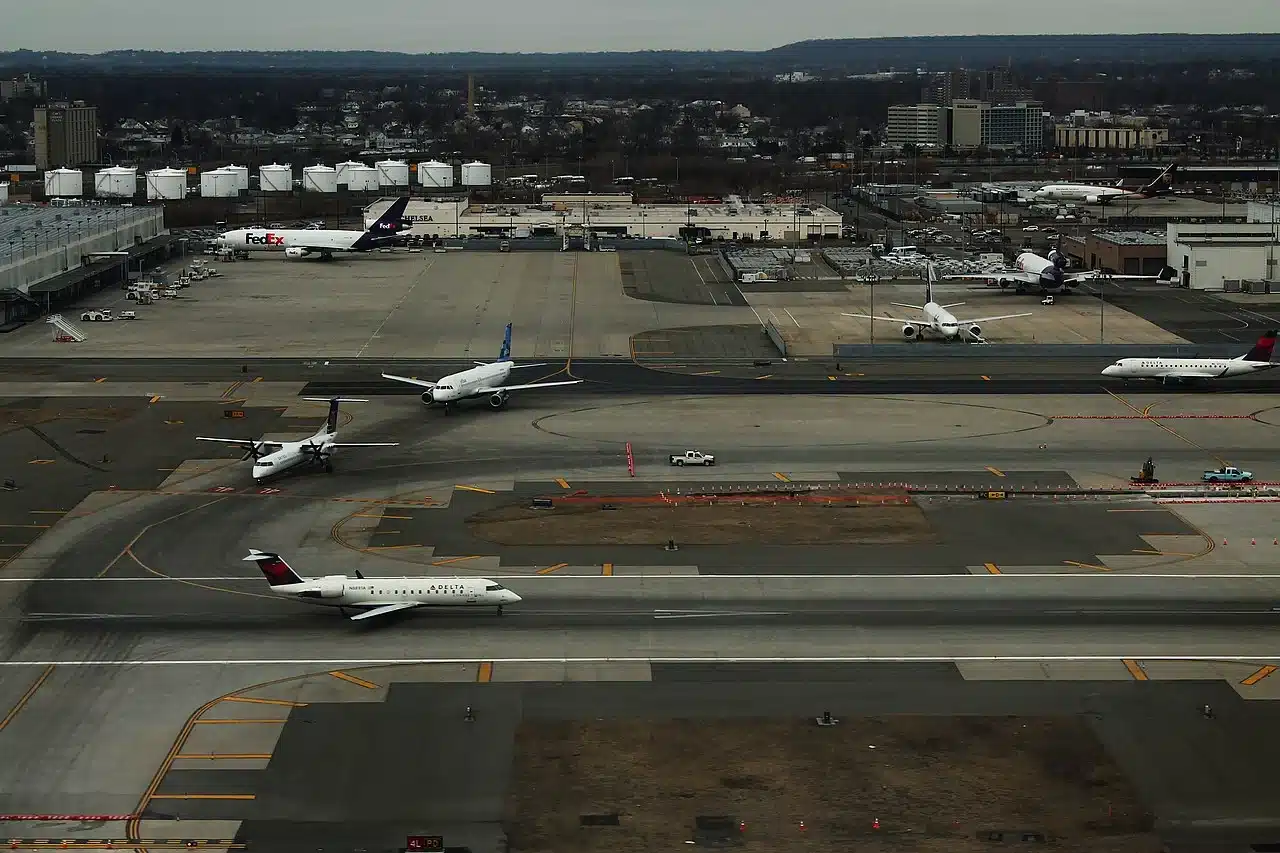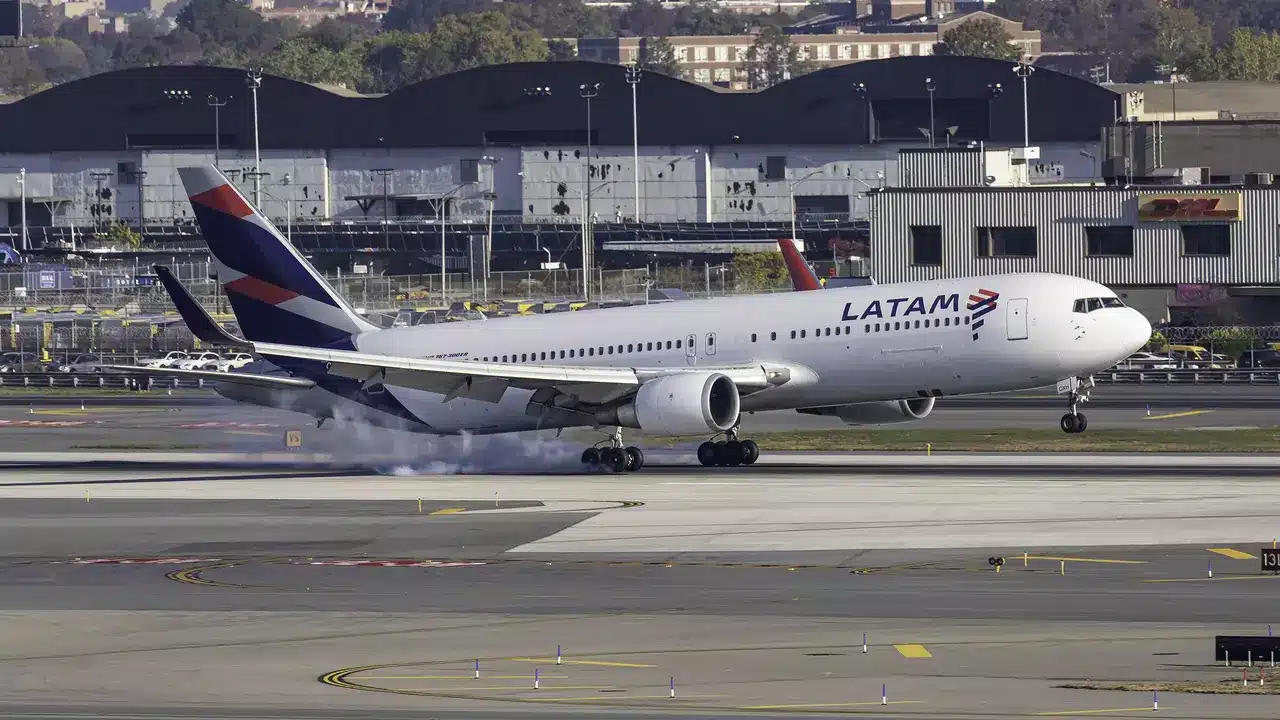


Allegiant Air is an ultra-low-cost air carrier found in the United States. Find out everything you need to know about its aircraft and the routes they fly.
[elementor-template id=”2293″]
Allegiant Air is a less popular American ultra-low-cost air carrier. With Frontier Airlines and Spirit Airlines dominating the market, many forget that Allegiant is a competitor to these airlines in certain parts of the country.
With a different approach to the ultra-low-cost strategy, the airline can charge fares that are too cheap for passengers to pass up.
In this guide, we will dive into the operations of this airline. We’ll uncover details you should know about the Allegiant Air fleet, the routes they fly, as well as customer reviews to get an idea of what it is like to fly with Allegiant Air.
Allegiant Air was founded on the principle of managing costs to keep customer prices down, just like most ultra-low-cost airlines. However, Allegiant Air takes a rather unique approach contrary to other ULCC airlines on the market.
Instead of being an airline that is extra conscious about being efficient (saving on fuel, and maintenance costs) like Frontier Airlines, Allegiant Air decides to save on fixed costs, like saving when they purchase aircraft.
Allegiant has been known to purchase second-hand aircraft. These aircraft typically have been used rather extensively at other major carriers. Compared to a new aircraft, purchasing much older aircraft is significantly cheaper for the airline. However, for Allegiant, much of the cost comes with keeping these planes in the air.
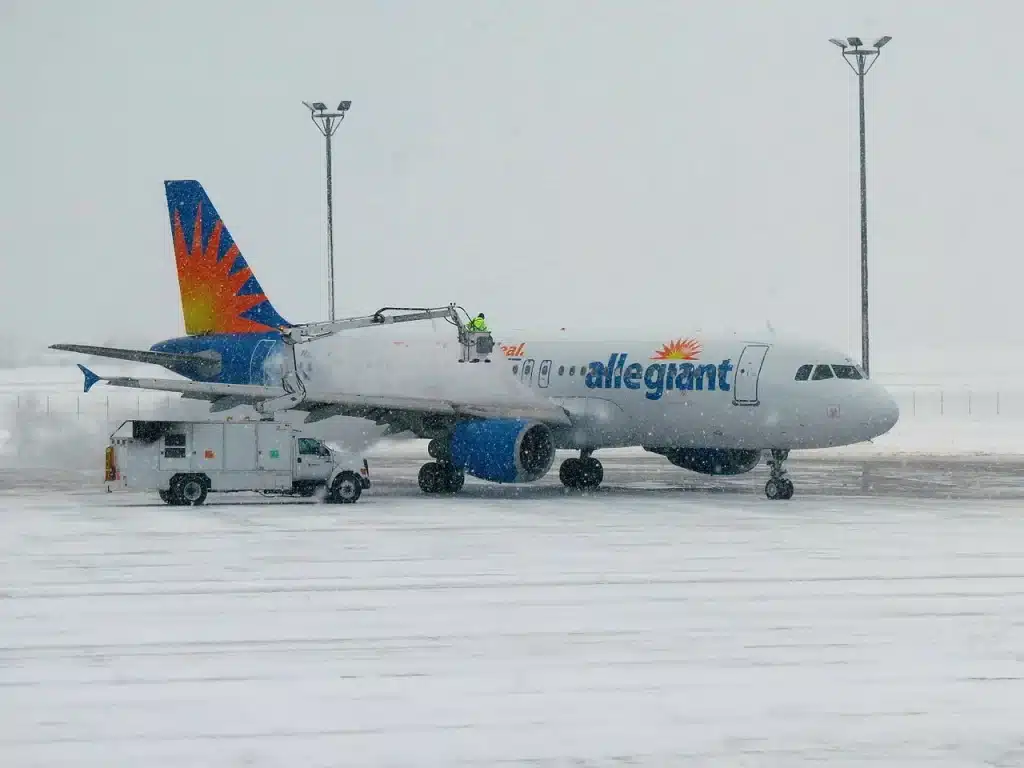
Allegiant Air has a plan to mitigate these costs. They don’t use aircraft every day. Oftentimes, they fly to a destination once a day, keeping the aircraft parked on the tarmac for some time until the return flight needs to be made. Fewer planes in the air means less wear and tear on airframes, ultimately making these older aircraft cheaper to maintain.
This business model can be seen in practice by analyzing Allegiant’s historical aircraft fleet. Allegiant was founded in 1997 and operated its first flight in 1998. At that time, many airlines closing out the 20th century in the United States like Southwest Airlines and the startup JetBlue Airways, were operating new Boeing 737 and Airbus A320 aircraft. Allegiant Air was using the gas-guzzling and loud MD-80, an aircraft whose service life started towards the late 1970s.
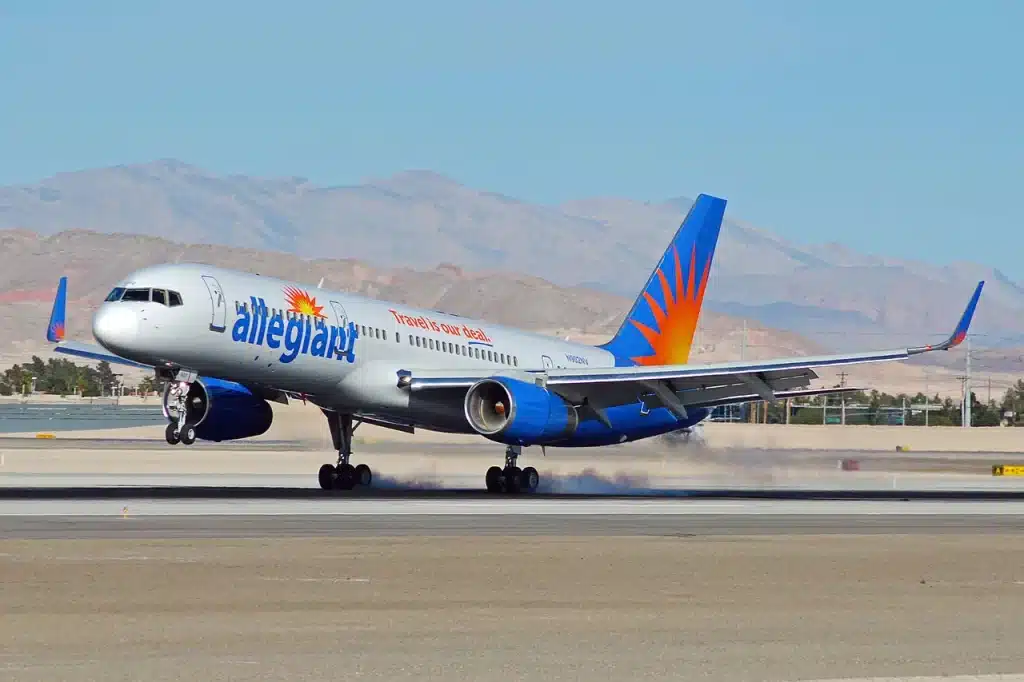
The vast majority of their fleet was made up of these inefficient aircraft. Towards, the end of the 2010s, Allegiant experimented with flights to Hawaii with Boeing 757s purchased from Thomsen Airways. Ultimately, the airline had to scrap these flights because the cost of maintaining the Boeing 757 was too high.
It took until 2012, for Allegiant Air to shift into using modern 21st century airliners.
Allegiant purchased its first second-hand Airbus A319 planes from European airline EasyJet and Philippean airline Cebu Pacific. They also added Airbus A320 aircraft the following year from Spanish airline Iberia and Philippine Airlines.
Three years later in 2016, Allegiant Air shifted from its fleet strategy of buying second-hand airplanes and purchased 13 brand new Airbus A320s from Airbus. However, these aircraft were purchased cheaper as Airbus has shifted its sights on producing the next generation of Airbus Aircraft, the NEO (new engine option) class.
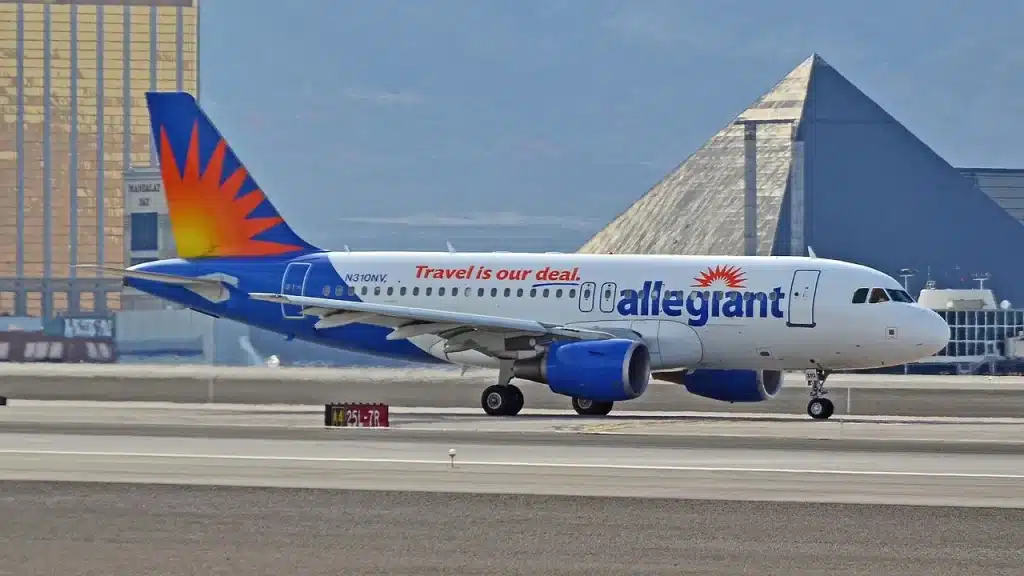
As of February 2024, Allegiant Air flies 31 Airbus A319 aircraft. The average age of its A319 fleet is over 18 years old.
Despite being older, if you would compare the A319 to the A320 & A321, the better-performing aircraft would be the Airbus A319.
The aircraft is lighter than both the A320 and A321. But has the same engines as the larger two aircraft in the class. That means the A319 can climb to altitude faster helping its fuel efficiency. With better fuel efficiency, the aircraft is more capable of flying cross country than the A320 and A321.
But the area the A319 lacks compared to its siblings in the class is its revenue per passenger. Since the A319 is smaller, it fits fewer passengers. Meaning flights with high operating costs like transcontinental flights, will earn less per flight than the Airbus A320 and Airbus A321.
With that said, Allegiant Air opts to use its A319 on short flights in the Midwest and the West Coast. This is probably due to the destinations that may not have much demand. Also, since the Airbus A319 is the airline’s best aircraft in terms of flight performance, with higher airport elevations and mountain ranges to clear, the Airbus A319 is a better choice for this area than the other aircraft in the fleet.
Allegiant Air Airbus A319 routes resemble much like a regional airline. Much of the Airbus A319 operation takes place in the Midwest and Southern States. The airline flies this aircraft in many smaller markets like Pasco. They are in competition with Breeze Airways on the bulk of these smaller market routes.
| Route | Airport 1 | Airport 2 |
| Medford – Santa Ana | Rogue Valley International–Medford Airport | John Wayne Airport |
| Provo – Las Vegas | Provo Municipal Airport | Harry Reid International Airport |
| Missoula – Las Vegas | Missoula Montana Airport | Harry Reid International Airport |
| Santa Ana – Austin | John Wayne Airport | Austin–Bergstrom International Airport |
| Minot – Las Vegas | Minot International Airport | Harry Reid International Airport |
| Asheville – Las Vegas | Asheville Regional Airport | Harry Reid International Airport |
| Tulsa – Orlando | Tulsa International Airport | Orlando Sanford International Airport |
| Flint – Las Vegas | Bishop International Airport | Harry Reid International Airport |
| Fargo – Las Vegas | Hector International Airport | Harry Reid International Airport |
| Omaha – Las Vegas | Eppley Airfield | Harry Reid International Airport |
| Grand Forks – Las Vegas | Grand Forks International Airport | Harry Reid International Airport |
| Los Angeles – Tulsa | Los Angeles International Airport | Tulsa International Airport |
| Memphis – Las Vegas | Memphis International Airport | Harry Reid International Airport |
| Bismarck – Phoenix | Bismarck Municipal Airport | Phoenix–Mesa Gateway Airport |
| Indianapolis – Key West | Indianapolis International Airport | Key West International Airport |
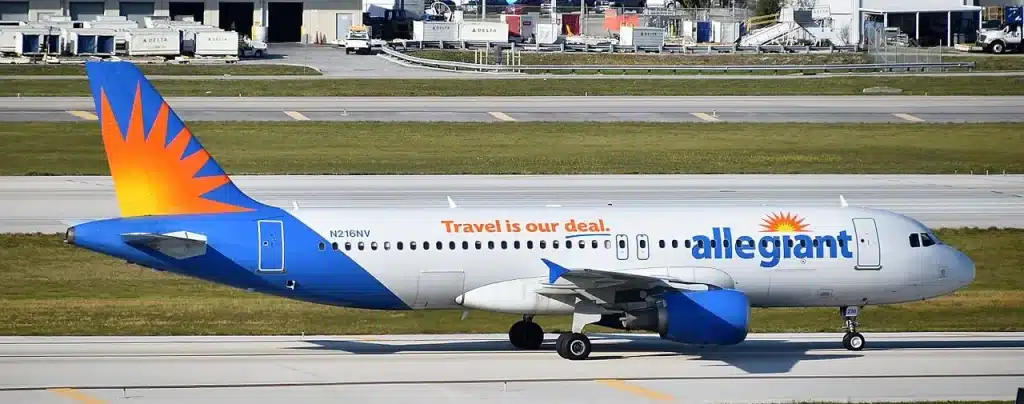
The airline’s fleet is largely made up of Airbus A320s. Allegiant owns a total of 92 A320s.
Allegiant Air can indiscriminately fly its Airbus A320. It can more than fly the same routes as the Airbus A319. Since the airline doesn’t fly many high-demand routes to major cities, the airline doesn’t capitalize on the extra seating the 320 provides over the A319.
However, Allegiant seems to favor this aircraft for its longer routes across the country. That is surprising since the Airbus A319 is technically more capable of transcontinental flying than the A320.
The majority of the A320 flights for Allegiant are isolated in the Southeastern portion of the country as well as from its hub in Phoenix-Mesa Gateway Airport.
| Route | Airport 1 | Airport 2 |
| Melbourne – Allentown | Melbourne Orlando International Airport | Lehigh Valley International Airport |
| Orlando – Hagerstown | Orlando Sanford International Airport | Hagerstown Regional Airport |
| Orlando – Norfolk | Orlando Sanford International Airport | Norfolk International Airport |
| St.Petersburg – Greensboro | St. Pete–Clearwater International Airport | Piedmont Triad International Airport |
| Asheville – Phoenix | Asheville Regional Airport | Phoenix–Mesa Gateway Airport |
| St.Petersburg – Knoxville | St. Pete–Clearwater International Airport | McGhee Tyson Airport |
| Fort Lauderdale – Grand Rapids | Fort Lauderdale–Hollywood International Airport | Gerald R. Ford International Airport |
| Flint – Las Vegas | Bishop International Airport | Harry Reid International Airport |
| Orlando – Grand Rapids | Orlando Sanford International Airport | Gerald R. Ford International Airport |
| Punta Gorda – Indianapolis | Punta Gorda Airport | Indianapolis International Airport |
| Nashville – Provo | Nashville International Airport | Provo Municipal Airport |
| Cedar Rapids – Phoenix | Eastern Iowa Airport | Phoenix-Mesa Gateway Airport |
| Sioux Falls – Phoenix | Sioux Falls Regional Airport | Phoenix-Mesa Gateway Airport |
| Bismarck – Phoenix | Bismarck Municipal Airport | Phoenix-Mesa Gateway Airport |
| St.Cloud – Phoenix | St. Cloud Regional Airport | Phoenix-Mesa Gateway Airport |
| Indianapolis – Las Vegas | Indianapolis International Airport | Harry Reid International Airport |
| Eugene – Phoenix | Eugene Airport | Phoenix-Mesa Gateway Airport |
Allegiant Air is planning to add Boeing 737 Max to their fleet in the future. This is a rapid deviation from their normal operating procedure of purchasing older aircraft. The Boeing 737 Max will be purchased as brand new airframes.
However, with Allegiant’s cost-saving measures in mind, these Max 7s were purchased at a discount because of all the trouble Boeing and their Max program has suffered in the aircraft types rollout in 2019.
The Boeing 737 can be seen as a competitor to the Airbus A320. But the Max is more fuel efficient meaning it can fly longer routes than any aircraft in Allegiant’s current aircraft fleet.
It’ll be interesting to see how this addition will play out for the airline. Most ultra-low-cost airlines tend to stick with one aircraft type to reduce maintenance and pilot training costs. With Boeing aircraft being added to the fleet, Allegiant will have to bear these extra costs in addition to the already higher maintenance costs from operating an older Airbus fleet.
When these aircraft will be added to the fleet is a major question. Allegiant has since reduced its order and has warned Boeing about delays with the Max series.
Like most ultra-low-cost carriers in the United States, the seating configurations for their aircraft are very basic, and that theme still goes for Allegiant Air.
Allegiant configures its aircraft in a single-class seating arrangement. There are two columns, each containing three seats, separated by an aisle where passengers can walk.
On the Airbus A319, Allegiant Air can fit 156 seats. The seats have a width of 17 inches and 30 inches of legroom. For emergency exit row seats (which Allegiant charges extra for) passengers are afforded an extra 4 inches of legroom.
For Allegiant’s A320, the airline can accommodate 177 passengers per flight on board this aircraft. It has the same seat measurements found on the Airbus A319.
For all that’s worth, the seats are on par with what you receive on Spirit Airlines and Frontier Airlines on their Airbus aircraft. Spirit Airlines offers more legroom in some seats while the width of the seats is larger on Frontier than Allegiant.
The reviews for Allegiant Air are not great. With that said many reviews can be misleading because people don’t understand what you should be getting on an ultra-low-cost airline.
ULCCs get you from destination A to destination B as cheaply as possible. There are going to be some amenities that you will find on other airlines that will be excluded.
In Allegiant’s case, the airline received a lot of hate.
For passengers that understand the ULCC principle, the review of the airline is pretty mum. The price of the airline tickets is the main attraction. They get you where you need to go safely.
However, many negative reviews could be helpful in what to expect on flying with this airline. People complain about the seats and the airline’s overall unreliability. Planes tend to break down frequently and lack of everyday service are major complaints we researched.
Below are several reviews that we found helpful to describe the experience of flying on Allegiant Air planes.
I was AMAZED at how bad their seats are! Hard plastic shells, with little padding; they do not recline; the seat tray is 5″ by 12″ and has trouble holding a drink and a can of soda…and doesn’t lift up into the seat back, but hangs out an inch or two.
SeatGuru
My seat was INCREDIBLY uncomfortable. Even though the flight was only 77min, after about 45min I began to get very uncomfortable. Being 6’4″ I was thoroughly impressed with the legroom, & even though the aircraft I flew from Pittsburgh to Savannah was only 12.5yrs old, the seats, although having the appearance of being new, felt old & worn with NO PADDING whatsoever!!! Even though the price was GREAT, flight was on-time & the crew was pleasant & professional, I would NEVER fly Allegiant over 90min…I’ll spend the extra $50 approx. to fly w/a different carrier, SOLELY BECAUSE OF THE UNCOMFORTABLE SEATS, IT WAS THAT BAD!!!
SeatGuru
We’ve flown Allegiant several times and had no issues. Everyone has been very friendly and helpful. I don’t think the seats were any less comfortable than other airlines. We always pay more for the first row if we can get it because it has tons of legroom. Your planes may be different, of course.
Reddit
I purchased the ticket for my daughter to Tennessee and back. This airline has too many breakdowns therefore a long wait for another flight to the same destination or either there was no flight and had to make the 3 hour drive round trip to and and from the airport from our city yet again to come back another day. Needless to say we never used Allegiant Air again. Was supposed to get a free flight for the trouble but when my daughter tried to use it they conveniently had no record of it.
Consumer Affairs
https://www.planespotters.net/airline/Allegiant-Air
https://seatguru.com/airlines/Allegiant_Air/information.php
https://www.flightradar24.com/


